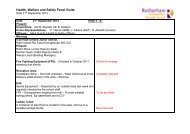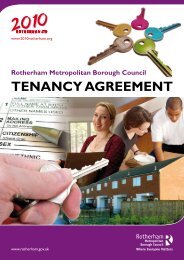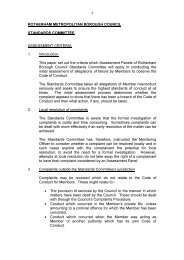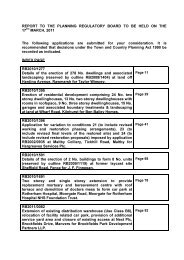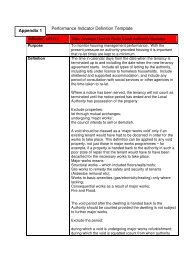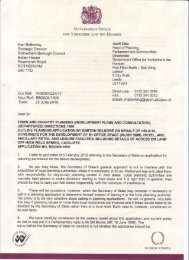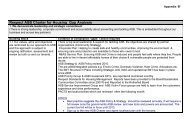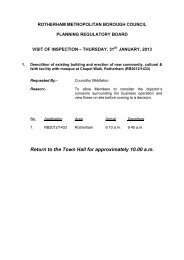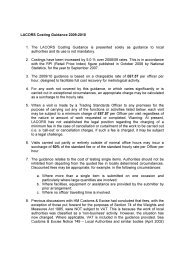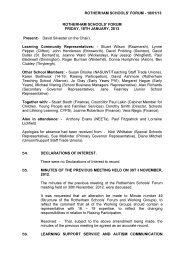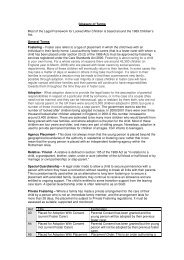M1 J32 to J35a Managed Motorway Consultation Document - assets ...
M1 J32 to J35a Managed Motorway Consultation Document - assets ...
M1 J32 to J35a Managed Motorway Consultation Document - assets ...
You also want an ePaper? Increase the reach of your titles
YUMPU automatically turns print PDFs into web optimized ePapers that Google loves.
<strong>M1</strong> <strong>J32</strong> <strong>to</strong> <strong>J35a</strong> <strong>Managed</strong> Mo<strong>to</strong>rway<br />
<strong>Consultation</strong> <strong>Document</strong><br />
APPENDIX C – Q&A FOR <strong>M1</strong> JUNCTIONS 32-35a<br />
Q. What is happening<br />
A. The <strong>M1</strong> Mo<strong>to</strong>rway is a strategic route for local, regional and international traffic forming<br />
part of the Trans European Road Network and plays a major role as:<br />
<br />
<br />
A direct mo<strong>to</strong>rway route between the North and the South<br />
A major route connecting major conurbations and providing access <strong>to</strong> two<br />
important international gateways.<br />
The <strong>M1</strong> between Junctions 32 and 35a is part of the primary strategic link between<br />
Nottingham and Leeds and currently the link carries traffic in excess of design levels,<br />
resulting in congestion and delays <strong>to</strong> drivers being a major transport issue. The section<br />
for which variable manda<strong>to</strong>ry speed limits are being consulted on is 11.1 miles long and<br />
runs between junction 32 (<strong>M1</strong>8 Interchange) and junction 35a (A616). It was opened<br />
between 1967 and 1968 and was constructed <strong>to</strong> dual three lane mo<strong>to</strong>rway (D3M)<br />
standard. The carriageway has never been widened and remains as D3M standard.<br />
The <strong>M1</strong> between junctions 32 and 35a is congested during the weekday morning and<br />
evening peak hours and also at other times when traffic flows are heavy. The average<br />
two-way daily traffic flow on the scheme section exceeds 110,000 vehicles, which is<br />
over 20% higher than the congestion reference flow (CRF) of around 90,000 vehicles<br />
per day. The CRF represents the daily flow level at which a road is likely <strong>to</strong> be<br />
congested during weekday peak hours.<br />
The scheme section has a higher personal injury accident rate than the national average<br />
for mo<strong>to</strong>rways (England Mo<strong>to</strong>rway Data 2010), including a higher killed or seriously<br />
injured (KSI) accident rate, higher slight accident rate and a higher <strong>to</strong>tal casualty rate,<br />
although it does have a lower fatality rate.<br />
Q. Why is the Highways Agency consulting<br />
A. This consultation will provide an opportunity for interested parties and individuals <strong>to</strong><br />
comment on the implementation of variable manda<strong>to</strong>ry speed limits and the introduction<br />
of the concept of the emergency refuge area within a managed mo<strong>to</strong>rway scheme on<br />
this section of the <strong>M1</strong>.<br />
Q. Who can respond <strong>to</strong> this<br />
A. This consultation is available for anyone <strong>to</strong> respond <strong>to</strong>, including organisations that<br />
would be affected by the implementation of variable manda<strong>to</strong>ry speed limits. The<br />
consultation is aimed at any affected stakeholder groups.<br />
25



